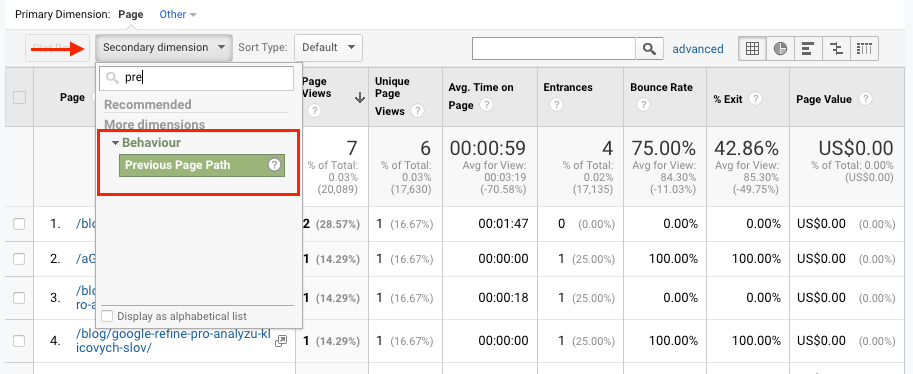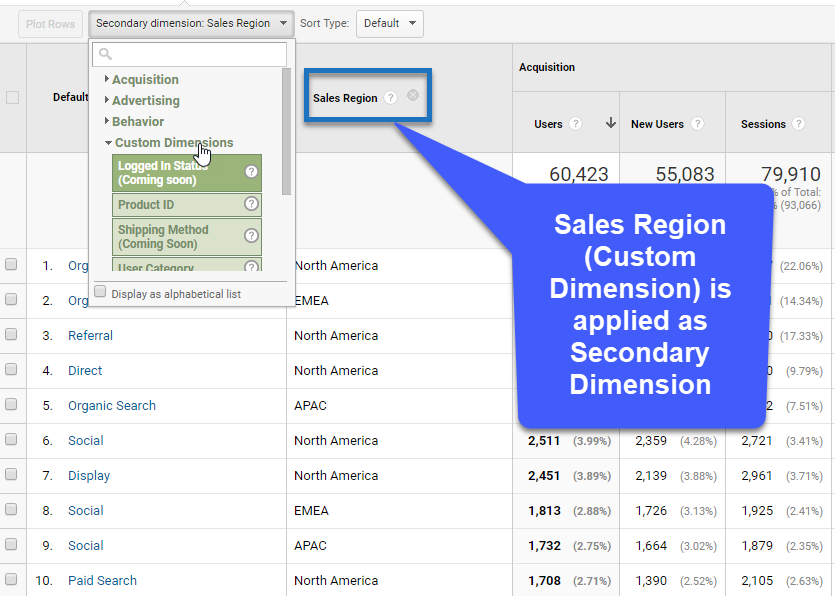Getting The What Is A Secondary Dimension In Google Analytics To Work
Wiki Article
Not known Details About What Is A Secondary Dimension In Google Analytics
Table of ContentsGet This Report on What Is A Secondary Dimension In Google AnalyticsNot known Factual Statements About What Is A Secondary Dimension In Google Analytics Get This Report on What Is A Secondary Dimension In Google AnalyticsFascination About What Is A Secondary Dimension In Google Analytics
If this does not seem clear, below are some examples: A deal happens on a site. Its measurements can be (however are not restricted to): Transaction ID Coupon code Newest website traffic source, and so on. An individual logs in to a site, and we send out the event login to Google Analytics. That occasion's custom-made measurements may be: Login approach User ID, and so on.Although there are lots of measurements in Google Analytics, they can not cover all the feasible scenarios. Therefore personalized measurements are needed. Points like Web page link are universal and relate to lots of instances, however suppose your business offers on-line courses (like I do)? In Google Analytics, you will certainly not find any measurements relevant specifically to on-line courses.
9%+ of organizations utilizing GA have nothing to do with training courses. And also that's why anything relevant particularly to on-line courses need to be configured by hand. Enter Personalized Capacities. In this blog article, I will not dive deeper into customized dimensions in Universal Analytics. If you want to do so, read this guide.

The range specifies to which events the measurement will use. In Universal Analytics, there were four extents: User-scoped customized measurements are put on all the hits of a user (hit is an occasion, pageview, etc). For instance, if you send out User ID as a custom-made dimension, it will certainly be applied to all the hits of that particular session as well as to all the future hits sent out by that customer (as long as the GA cookie remains the same).
What Is A Secondary Dimension In Google Analytics - An Overview
For example, you can send out the session ID customized dimension, and also if you send it with the last occasion of the session, all the previous events (of the same session) will certainly get the value (What Is A Secondary Dimension In Google Analytics). This is carried out in the backend of Google Analytics. measurement applies just to that particular event/hit (with which the dimension was sent)
That measurement will certainly be applied just to the "trial started" event. Product-scoped custom measurement applies just to a certain product (that is tracked with Enhanced Ecommerce performance). Even if you send out multiple products with the same purchase, each product might have various values in their product-scoped personalized dimensions, e. g.
Why am I informing you this? Because some points have transformed in Google Analytics 4. In Google Analytics 4, the session range is no more offered (at least in personalized dimensions). Google claimed they would include session-scope in the future to GA4. If you desire to apply a measurement to all the events of a specific session, you must send out that dimension with every event (that can be done on the code level (gtag) or in GTM).
What Does What Is A Secondary Dimension In Google Analytics Mean?
It can be in a cookie, data layer, or elsewhere. From now on, personalized dimensions are either hit-scoped or user-scoped (formerly known as User Qualities). User-scoped personalized dimensions in GA4 work similarly to the user-scoped dimensions in Universal Analytics yet with some distinctions: In Universal Analytics, a user-scoped personalized measurement (collection in the middle of the individual session) was related to EVERY event of the same session (also if some occasion occurred before the measurement was set).Although you can send out personalized item data to GA4, currently, there is no other way to see it in reports properly. With any luck, this will certainly be altered in the future. Or am I missing something? (let me recognize). GA4 currently supports item-scoped custom measurements. Eventually in the past, Google stated that session-scoped customized measurements in GA4 would be readily available also.
However when it pertains to custom measurements, this scope is still not readily available. As well as now, let's transfer to the second component of this post, where I will reveal you exactly how to configure custom measurements as well as where to locate them in Google Analytics 4 reports. Let me begin with a basic summary of the procedure, and after that we'll take a look at an example.

You can simply send the event name, say, "joined_waiting_list" and after that consist of the criterion "course_name".
The Ultimate Guide To What Is A Secondary Dimension In Google Analytics
Because situation, you will require to: Register a criterion as a custom-made meaning Beginning sending image source custom criteria with the events you desire The order DOES NOT issue right here. Yet you ought to do that practically at the very same time. If you start sending out the specification to Google Analytics 4 and just register it as a customized dimension, claim, one week later, your page records will be missing out on that one week of data (because the enrollment of a customized measurement is not retroactive).Each time a site visitor clicks on a food selection thing, I will send an occasion and also two extra criteria (that I will later register as custom measurements), menu_item_url, as well as menu_item_name.: Food selection web link click tracking trigger conditions differ on a lot of web sites (because of different click classes, IDs, and so on). Attempt to do your ideal to apply this instance.
Go to Google Tag Manager > Sets Off > New > Just Links. By producing this trigger, we will certainly enable the link-tracking performance in Google Tag Supervisor.
Go to your website and click any of have a peek at this site the menu web links. In fact, click at least two of them. Return to the sneak peek setting, as well as you must start seeing Web link Click occasions in the preview mode. Click the first Web link, Click occasion as well as go to the Variables tab of the preview mode.
Report this wiki page